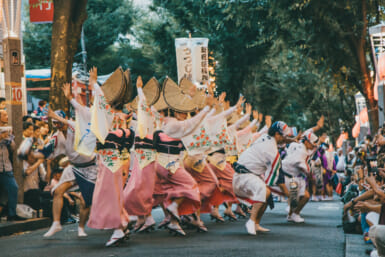Beginning with 1905 Battle of Japan Sea, historic battleship remains a crowd-pleaser
by Alex Dean
At exactly 1:30 p.m. on May 27, 1905, the Russian Fleet loomed up on the horizon some 15 kilometers away. Admiral Heihachiro Togo, Commander-in-Chief of the Japanese Navy, stood on Mikasa’s bridge and watched the Russian Fleet approach.
Waiting patiently, Admiral Togo sent up the “Z” flag, signifying “The fate of the Empire depends on this battle. Let every man do his utmost.” Then at 2:05 p.m., with the enemy at a distance of eight kilometers, Admiral Togo ordered a hard turn across the path of the approaching enemy, beginning the historic Battle of the Japan Sea.
Japan’s fleet of 96 vessels included only 12 combatants. Of the 38 Russian vessels, 29 were combatants and nine were transports. The battle raged through the night and into the next day. When the toll was paid, 19 Russian vessels had been sunk and seven captured. Of the 12 vessels which escaped, only one transport made it all the way back to its home port. The Russian death toll was 4,545, with 6,106 taken prisoner.
On the Japanese side, 116 men were killed and three torpedo boats sunk. On board Mikasa, 19 were dead or dying, including His Highness Prince Hiroyasu Fushimi, who was the division officer of the rear main gun battery.
The Mikasa, flagship of the Japanese Navy, had won a place in naval history.
The Mikasa pulled into Sasebo on Sept. 9 of that same year. Admiral Togo departed for Tokyo. At 12:30 a.m. on September 11, fire broke out near the rear mast of the flagship, the result of a small explosion. Despite immediate fire-fighting response, at 1:37 a.m. a magazine on Mikasa’s port quarter exploded, sending holes through the hu’l and the ship to the bottom. Unbelievably, 339 crew members and firefighters went down with her.
Almost a year later, the Mikasa was refloated and slated for repair work. She was recommissioned in 1908, serving initially as a first-class battleship, downgraded through the following years to a second class and then third-class battleship, and finally serving as a Coast Guard ship. In 1921 she ran aground in Askold Channel. Following her return home she was placed in the mothball fleet. In 1925 she was settled at the shore of Shirahama, Yokosuka (her resting place today), as a memorial ship.
But her troubles weren’t over. Shortly after World War II an order was issued by the Allied Forces to scrap the Mikasa. Public sentiment caused the appropriation of funds by the Japanese government for the ship’s restoration. Additional financial support was contributed by the U.S. Forces and Japanese public. At ceremonies on May 27, 1961, the Mikasa was once again opened to the public.
In May 1966, Shinzo Koizumi, President of Keio University in 1933 and Educational Adviser to the Crown Prince in 1949, paid tribute to the Mikasa with these words to his countrymen:
“The flag is now fluttering in the wind from the sea in Yokosuka. I earnestly hope that as many Japanese as possible, including boys and girls, would visit this memorial ship and consider the past, present and future of Japan.”
(Please read related story “Restful look at Japanese history: Mikasa Park“).









